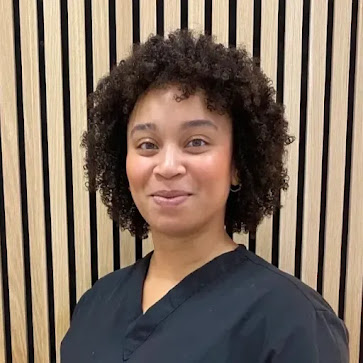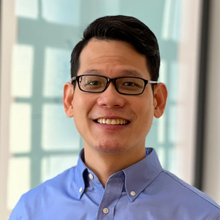Praise For: Occipital Fiber Analysis and Soft Tissue Reflex Techniques (CMRT)
Hear directly from our students about the benefits of our program.-

Dr. Bethany Carilli
I chose to take this course as I am always interested in learning about the many intricate connections are body has in unexpected ways. I have increasingly seen more patients with ongoing visceral complaints and want to be able to help them in the best way possible, and in a way that no other health care provider can do.
The ability to go back through and re-play the content is so important when such a short video contains an entire protocol. Also having slides available for printing allows for review later on and a quick double check as needed in clinic.
These protocols are applicable day 1 after learning the content. As I am slowly getting more experience assessing occipital fibers, I am able to ask patients if they have any coordinating symptoms to the CMRT content. So many patients are initially surprised that chiropractic care may help their digestive complaints, respiratory complaints, etc.
SOT is an intricate and complex technique to learn and master, but each piece I learn furthers my understanding that the nervous system has so many ways of telling us what it needs and where the problem lies, as long as you know how to ask it. My mind is still blown with the story that was shared during the Live Q&A about Dr. Rosen noticing that a patient may have had cancer return/other pathological changes due to her changing and non-responsive occipital fiber.
These courses continue to motivate me to study and work towards mastery of content, especially when we are serving an entirely sick and unwell community. The people in my community are, sadly, not hearing about the impact chiropractic care has on the nervous system from other providers, and information in this course and other SOT courses I have taken so far help me to be certain in my communication with my patients.I have been using the T3 respiratory syndrome protocols, especially all of the sinus releases, on at least 10 people per day, due to everyone coming in with congestion, post-sinus infections, post-COVID. Every single time the patients leave the office reporting drainage and immediate opening of their airways.
I have also been using the T3 protocols on a patient who had a severe bronchitis post-COVID and lost her voice along with other symptoms due to being ill. She lost her voice for several weeks and was unable to talk (she is a professor at a local university and was unable to teach) and continued to complain of difficulty breathing to her medical doctors. She has gone through several antibiotics and steroids without any resolution to her symptoms. I applied the stylohyoid muscle fixation protocol and within 48 hours her voice had mostly returned. I also have been continuing to manipulate the bronchitis point on her chest and pairing it with costal arch manipulation and post-ganglionic manipulation. Her O2 stats have been slowly increasing over the past few weeks and she is subjectively reporting ability to breathe more deeply, despite not taking any other medications at this time for this condition.
The videos are made with great quality and easily understood. This is content that every chiropractor needs to know to assist their patients in the best way possible.
-

Dr. Chloé Balay
I needed a technique to stabilize my patients who came back with the same pattern over and over again
My takeaways are: Listening carefully: the patient’s pain pattern can help identify their possible organ reflex pattern The post Ganglionic correction is necessary to end the protocol and balance out the organ activity The amount of stimulation (pressure) when correcting the occipital fibre and reflex is important for the correction to be done efficiently and for it to hold in time.
This program helped me to push my limits and dig deeper to find the root of the problem when my treatment didn’t last over time. Maintenance is easier to talk about when all the aspects of a patient’s symptoms have been handled.
The Adrenal reflex and Respiratory reflex were helpful to use during this period of the year, enabling the patient to keep the benefits of the treatment longer. In addition, the cranial balancing techniques, which can be included easily in every session, usually does settle the patient down and they end up feeling less on edge.
Thank you for the time you spent teaching us this technique and helping us for the past few months.
-

Dr. Jean Squire
I took this program to improve my skills.
It has given me the ability to better evaluate the patient’s body and understand the connections.
It is helping to work with that intelligence of the body.
Patient was having pain on inhalation. Used the CMRT Patient could breathe without pain.
-

Dr. Yusri Khir Johari
I took this program to improve my knowledge on CMRT.
This program is very detailed. There’s always more than what patients are complaining and anything can cause anything.
This program has made me more knowledgeable.
-

Dr. Amélie Valette
I took this course because i wanted to extend my knowledge on my basic SOT.
This is a complete seminar with a lot of information. It is accessible with great sharing.
Thank you.
The SOT® Pediatric Certificate Program
Demonstrate your commitment to your profession and patients, enhance your skills, and place yourself on the road to mastery in the art of chiropractic adjustment.

